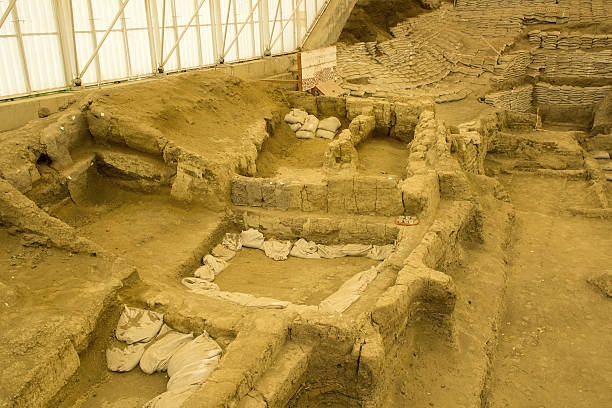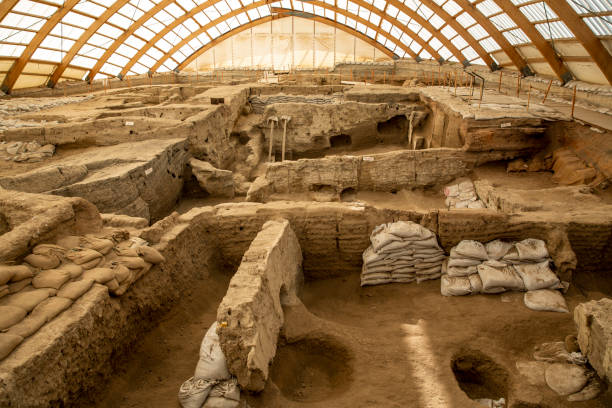
çatalhöyük Pictures, Images and Stock Photos
Browse 310+ çatalhöyük stock photos and images available, or start a new search to explore more stock photos and images.

One of the popular historical ancient peace in Turkey,Konya
the first permanent bridge across the place at çatalhöyük
Catalhoyuk was a huge Neolithic and Chalcolithic settlement in southern Anatolia, Turkey. It is a UNESCO World Heritage Site now. It is situated near Cumra, Konya.
Catalhoyuk .Oldest town in the world in Turkey. Prehistoric, heritage.
catalhoyuk Konya (Turkey). Built in 7500 B.C.
Çatalhöyük was a very large Neolithic and Chalcolithic proto-city settlement in southern Anatolia, which existed from approximately 7500 BC to 5700 BC, and flourished around 7000 BC.[1] In July 2012, it was inscribed as a UNESCO World Heritage Site.
the first permanent bridge across the place at çatalhöyük
the first permanent bridge across the place at çatalhöyük
Çatalhöyük; also Çatal Höyük and Çatal Hüyük; çatal is Turkish for "fork", höyük for ("mound") was a very large Neolithic and Chalcolithic proto-city settlement in southern Anatolia, which existed from approximately 7500 BC to 5700 BC, and flourished around 7000BC. It is the largest and best-preserved Neolithic site found to date. In July 2012, it was inscribed as a UNESCO World Heritage Site.
catalhoyuk Konya (Turkey). Built in 7500 B.C. .Photo taken on
Replicas of prehistoric Wall Paintings on the wall of a sample ancient house of Catalhoyuk in Konya, Turkey. Çatalhöyük was a very large Neolithic and Chalcolithic proto-city settlement in southern Anatolia, which existed from approximately 7500 BC to 5700 BC, and flourished around 7000 BC.
Replicas of prehistoric Wall Paintings on the wall of a sample ancient house of Catalhoyuk in Konya, Turkey. Çatalhöyük was a very large Neolithic and Chalcolithic proto-city settlement in southern Anatolia, which existed from approximately 7500 BC to 5700 BC, and flourished around 7000 BC.
Catalhoyuk, Turkey - February 12,2018:Çatalhöyük or Çatal Höyük is not the oldest site of the Neolithic era or the largest, but it is extremely important to the beginning of art. Located near the modern city of Konya in south central Turkey.Photo shows a tomb belonging to those ages.
Çatalhöyük was a very large Neolithic and Chalcolithic proto-city settlement in southern Anatolia, which existed from approximately 7500 BC to 5700 BC, and flourished around 7000 BC.[1] In July 2012, it was inscribed as a UNESCO World Heritage Site.
Catalhoyuk .Oldest town in the world in Turkey. Prehistoric, heritage.
Catalhoyuk was a huge Neolithic and Chalcolithic settlement in southern Anatolia, Turkey. It is a UNESCO World Heritage Site now. It is situated near Cumra, Konya.
catalhoyuk Konya (Turkey)
The Neolithic site Çatalhöyük has a number of wall paintings depicting animals and hunting scenes. Çatalhöyük was a very large Neolithic and Chalcolithic proto-city settlement in southern Anatolia, which existed from approximately 7500 BC to 5700 BC, and flourished around 7000 BC.[1] In July 2012, it was inscribed as a UNESCO World Heritage Site.
Glastonbury tor filmed from drone on sunny day, footage was taken from dji mavic pro 2 drone, iconic monument in the middle of the countryside
Cumra, Konya/Turkey June 1 2016: Catalhoyuk Ancient City. Built in 7500 B.C. Catalhoyuk is the oldest settlement in the world. (Neolithic and Chalcolithic period)
catalhoyuk Konya (Turkey). Built in 7500 B.C. .Photo taken on
The Neolithic site Çatalhöyük has a number of wall paintings depicting animals and hunting scenes. Çatalhöyük was a very large Neolithic and Chalcolithic proto-city settlement in southern Anatolia, which existed from approximately 7500 BC to 5700 BC, and flourished around 7000 BC.[1] In July 2012, it was inscribed as a UNESCO World Heritage Site.
Archaeological find - a fragment of ancient ceramic vessel , sharpness on the find
Reconstructed prehistoric age weaving loom. Mudwall ancient house replica
Çatalhöyük was a very large Neolithic settlement in southern Anatolia, which existed from approximately 7500 BC to 5700 BC, and flourished around 7000 BC.
Catalhoyuk was a huge Neolithic and Chalcolithic settlement in southern Anatolia, Turkey. It is a UNESCO World Heritage Site now. It is situated near Cumra, Konya.
Stonehenge view under clear blue sky, clouds, and over green grass.
This natural wonder, which dates back to 65 million years ago and was formed as a result of geological deformations, has an area of 28 kilometers that includes remains from the Neolithic Age. The valley contains extremely interesting geological formations, cliffs and hundreds of caves with rock reliefs on the walls. The viewing terrace, which was built on a flat rock block, is 104 meters high, and the 8.5 meters distance of the observation terrace is a different project that extends into the void, built with steel construction and glass, and has become the focus of attention of many local and foreign visitors.
catalhoyuk Konya (Turkey). Built in 7500 B.C. .Photo taken on
Thin clearing of the excavation site in archeology
August 19, 2018. Catalhoyuk in Konya, Turkey. One of the oldest settlements in the world
Archaeological find - a fragment of ancient ceramic vessel
catalhoyuk Konya (Turkey). Built in 7500 B.C. .Photo taken on
Cumra, Konya/Turkey June 1 2016: Catalhoyuk Ancient City. Built in 7500 B.C. Catalhoyuk is the oldest settlement in the world. (Neolithic and Chalcolithic period) Archaeologist work in area.
Catalhoyuk was a huge Neolithic and Chalcolithic settlement in southern Anatolia, Turkey. It is a UNESCO World Heritage Site now. It is situated near Cumra, Konya.
Handmade Arrowhead Isolated on White with clipping path
Ruins od Neolithic city of Catalhoyuk in Konya, Turkey. Çatalhöyük was a very large Neolithic and Chalcolithic proto-city settlement in southern Anatolia, which existed from approximately 7500 BC to 5700 BC, and flourished around 7000 BC.
Çatalhöyük was a very large Neolithic and Chalcolithic proto-city settlement in southern Anatolia, which existed from approximately 7500 BC to 5700 BC, and flourished around 7000 BC.[1] In July 2012, it was inscribed as a UNESCO World Heritage Site.
TURKEY - MAY 16, 2005 : Catalhoyuk neolithic site, Konya province, Turkey.The archeological site was excavated by James Mellaart. Excavation and trenches of the Neolithic city Catal Huyuk in the Anatolian plain, Turkey.
Cave man and woman, prehistoric primitive people in stone age cartoon icons set. Pelt, weapon and mammoth tusk, fire with frying meat, ancient hoofed animal and fish, Isolated vector illustration
Catalhoyuk .Oldest town in the world in Turkey. Prehistoric, heritage.
Çatalhöyük; also Çatal Höyük and Çatal Hüyük; çatal is Turkish for "fork", höyük for ("mound") was a very large Neolithic and Chalcolithic proto-city settlement in southern Anatolia, which existed from approximately 7500 BC to 5700 BC, and flourished around 7000BC. It is the largest and best-preserved Neolithic site found to date. In July 2012, it was inscribed as a UNESCO World Heritage Site.
Catalhoyuk was a huge Neolithic and Chalcolithic settlement in southern Anatolia, Turkey. It is a UNESCO World Heritage Site now. It is situated near Cumra, Konya.
Catalhoyuk was a huge Neolithic and Chalcolithic settlement in southern Anatolia, Turkey. It is a UNESCO World Heritage Site now. It is situated near Cumra, Konya.
Dawn at Castlerigg
Archaeological excavation, detail of an ancient exploration, animal and bird bones
TURKEY - MAY 16, 2005 : Catalhoyuk neolithic site, Konya province, Turkey.The archeological site was excavated by James Mellaart. Excavation and trenches of the Neolithic city Catal Huyuk in the Anatolian plain, Turkey.
Glastonbury tor filmed from drone on sunny day, footage was taken from dji mavic pro 2 drone, iconic monument in the middle of the countryside
Replicas of prehistoric Wall Paintings on the wall of a sample ancient house of Catalhoyuk in Konya, Turkey. Çatalhöyük was a very large Neolithic and Chalcolithic proto-city settlement in southern Anatolia, which existed from approximately 7500 BC to 5700 BC, and flourished around 7000 BC.
Big Shapsug dolmen. A megalytic construction in the woods of Kuban.
Çatalhöyük was a very large Neolithic and Chalcolithic proto-city settlement in southern Anatolia, which existed from approximately 7500 BC to 5700 BC, and flourished around 7000 BC.[1] In July 2012, it was inscribed as a UNESCO World Heritage Site.
flint knife - stone age tool - one leaf blade in deer antler isolated on white background
This natural wonder, which dates back to 65 million years ago and was formed as a result of geological deformations, has an area of 28 kilometers that includes remains from the Neolithic Age. The valley contains extremely interesting geological formations, cliffs and hundreds of caves with rock reliefs on the walls. The viewing terrace, which was built on a flat rock block, is 104 meters high, and the 8.5 meters distance of the observation terrace is a different project that extends into the void, built with steel construction and glass, and has become the focus of attention of many local and foreign visitors.
Big Shapsug dolmen. A megalytic construction in the woods of Kuban.
Çatalhöyük was a very large Neolithic and Chalcolithic proto-city settlement in southern Anatolia, which existed from approximately 7500 BC to 5700 BC, and flourished around 7000 BC.[1] In July 2012, it was inscribed as a UNESCO World Heritage Site.
Çatalhöyük; also Çatal Höyük and Çatal Hüyük; çatal is Turkish for "fork", höyük for ("mound") was a very large Neolithic and Chalcolithic proto-city settlement in southern Anatolia, which existed from approximately 7500 BC to 5700 BC, and flourished around 7000BC. It is the largest and best-preserved Neolithic site found to date. In July 2012, it was inscribed as a UNESCO World Heritage Site.
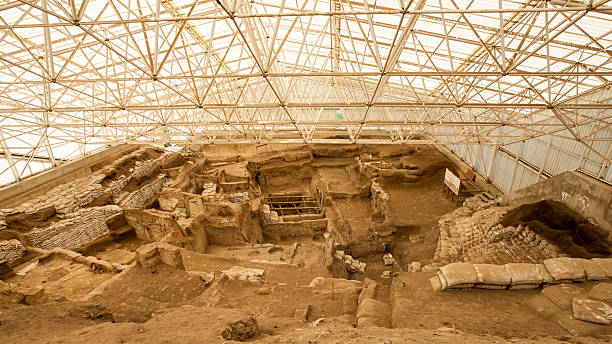
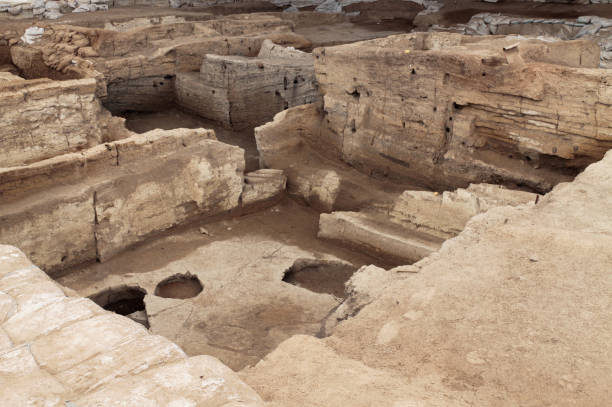
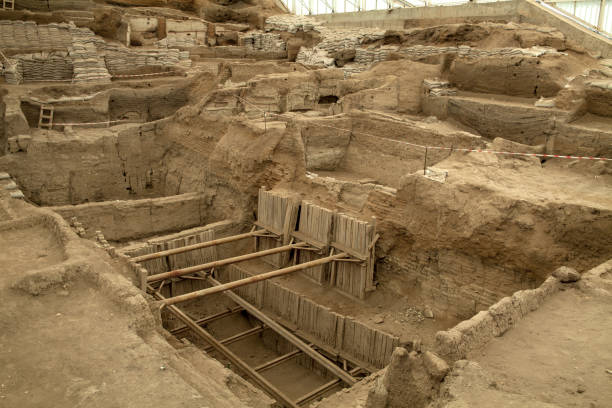

![Catalhoyuk in Konya Çatalhöyük was a very large Neolithic and Chalcolithic proto-city settlement in southern Anatolia, which existed from approximately 7500 BC to 5700 BC, and flourished around 7000 BC.[1] In July 2012, it was inscribed as a UNESCO World Heritage Site. çatalhöyük stock pictures, royalty-free photos & images](https://media.istockphoto.com/id/1317760811/photo/catalhoyuk-in-konya.jpg?s=612x612&w=0&k=20&c=LFUeP68VmJsbZwvHJtiBPguRBP9bqnm4D3mxUIHCJe4=)
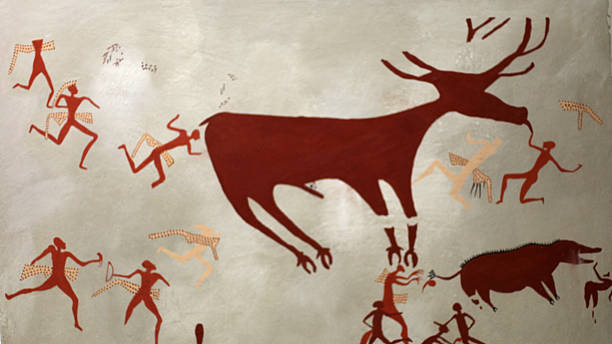

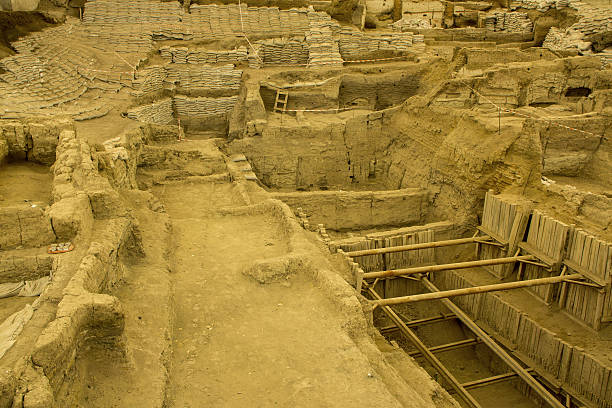

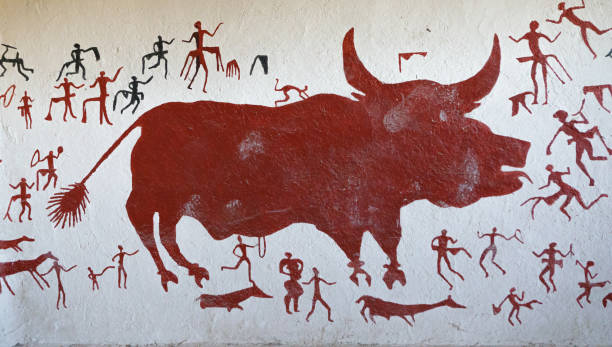
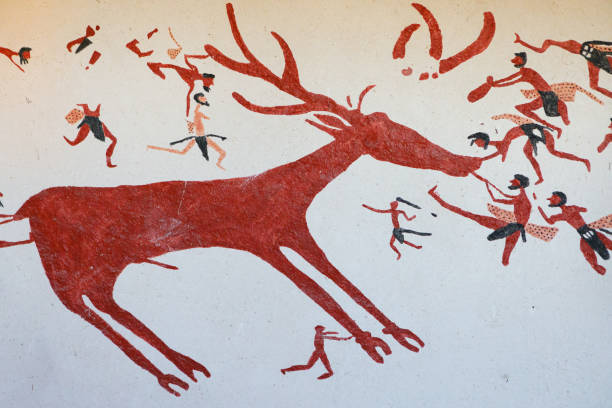
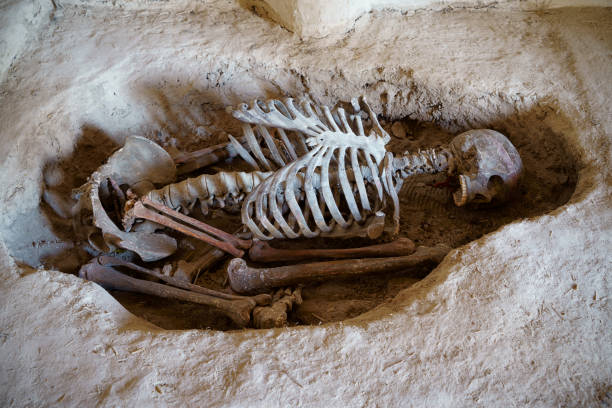
![Catalhoyuk in Konya Çatalhöyük was a very large Neolithic and Chalcolithic proto-city settlement in southern Anatolia, which existed from approximately 7500 BC to 5700 BC, and flourished around 7000 BC.[1] In July 2012, it was inscribed as a UNESCO World Heritage Site. çatalhöyük stock pictures, royalty-free photos & images](https://media.istockphoto.com/id/1317760838/photo/catalhoyuk-in-konya.jpg?s=612x612&w=0&k=20&c=bkwgsuzZRu2DGthZoWgeA5OSPW-OxtE4aeztovalv_M=)

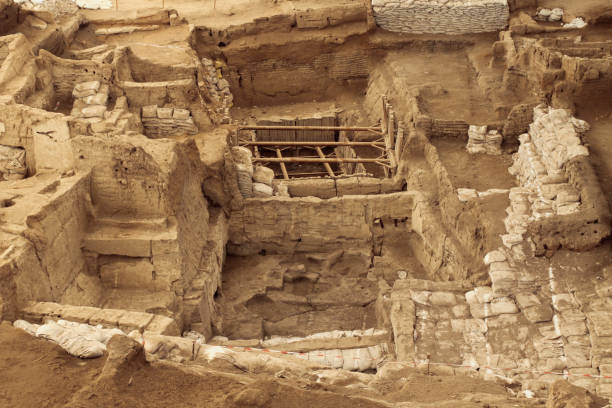
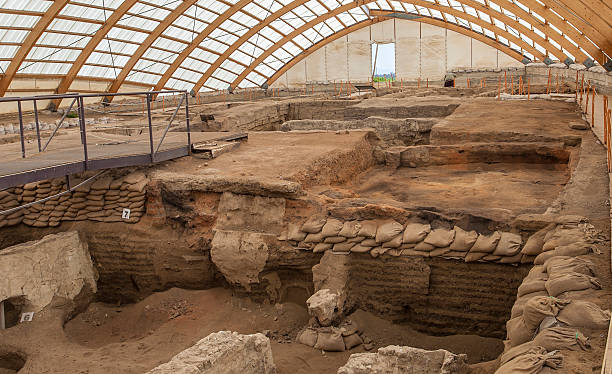
![Neolithic Wall Paintings in Çatalhöyük The Neolithic site Çatalhöyük has a number of wall paintings depicting animals and hunting scenes. Çatalhöyük was a very large Neolithic and Chalcolithic proto-city settlement in southern Anatolia, which existed from approximately 7500 BC to 5700 BC, and flourished around 7000 BC.[1] In July 2012, it was inscribed as a UNESCO World Heritage Site. çatalhöyük stock pictures, royalty-free photos & images](https://media.istockphoto.com/id/1317765582/photo/neolithic-wall-paintings-in-%C3%A7atalh%C3%B6y%C3%BCk.jpg?s=612x612&w=0&k=20&c=xBjrkSUZG9GrKq1WIeiHPHv5-d5NgDZshV93CFJeXnY=)
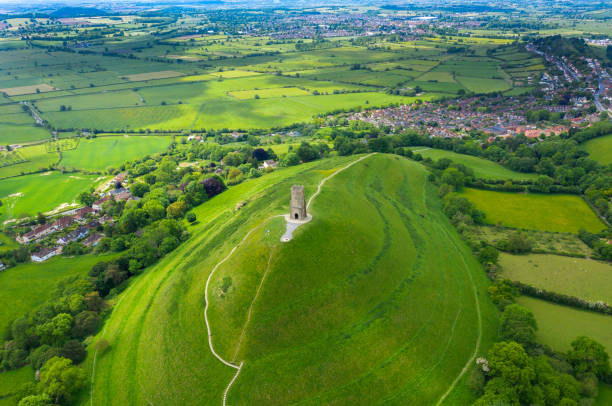
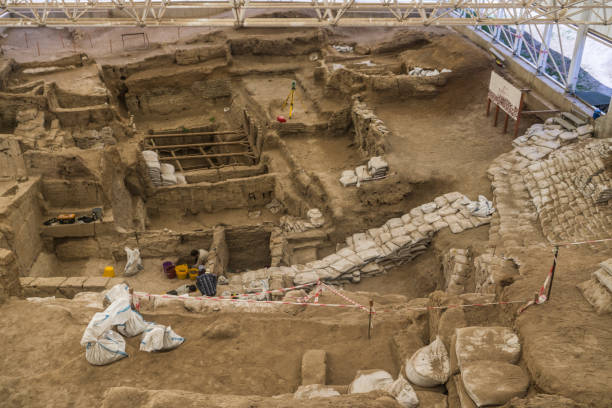

![Neolithic Wall Paintings in Çatalhöyük The Neolithic site Çatalhöyük has a number of wall paintings depicting animals and hunting scenes. Çatalhöyük was a very large Neolithic and Chalcolithic proto-city settlement in southern Anatolia, which existed from approximately 7500 BC to 5700 BC, and flourished around 7000 BC.[1] In July 2012, it was inscribed as a UNESCO World Heritage Site. çatalhöyük stock pictures, royalty-free photos & images](https://media.istockphoto.com/id/1317765566/photo/neolithic-wall-paintings-in-%C3%A7atalh%C3%B6y%C3%BCk.jpg?s=612x612&w=0&k=20&c=VWA5-9ymwxY6YLPQRL2aO9ozYco7XdQtF0KjZS-LAwA=)
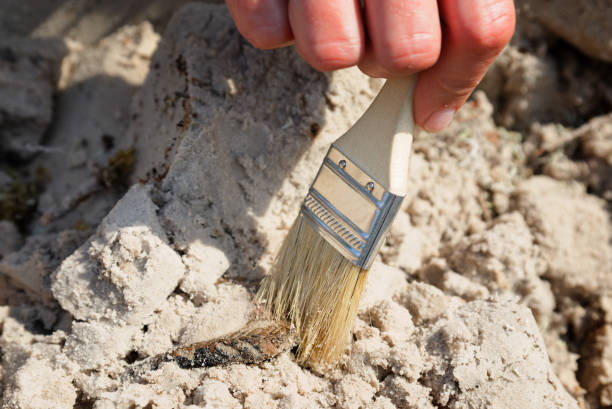
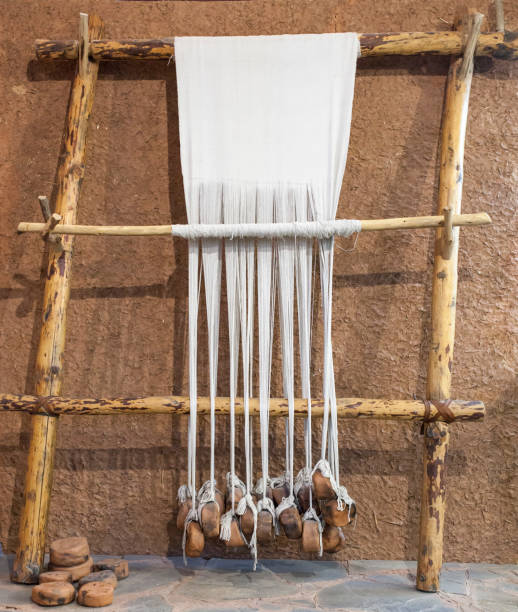

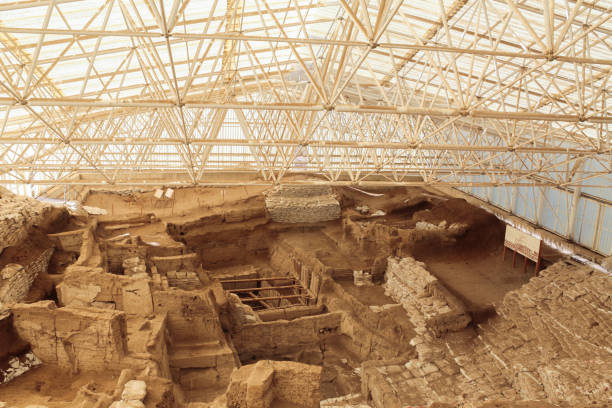
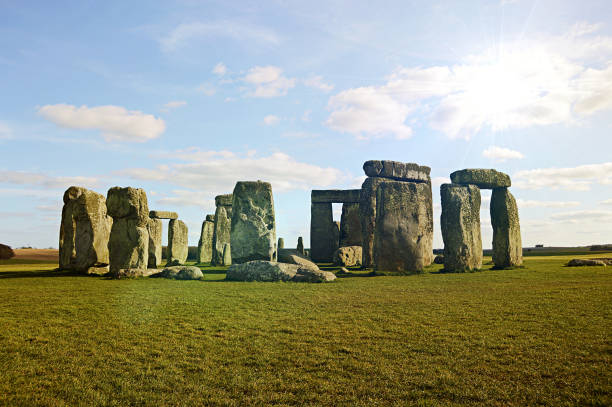
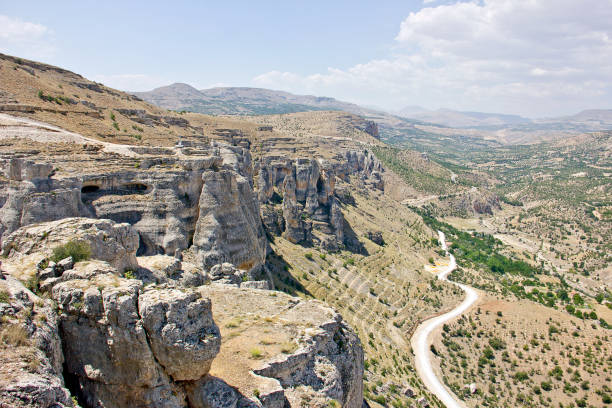
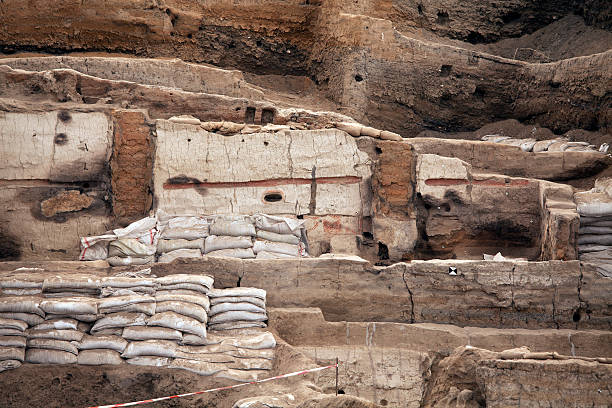
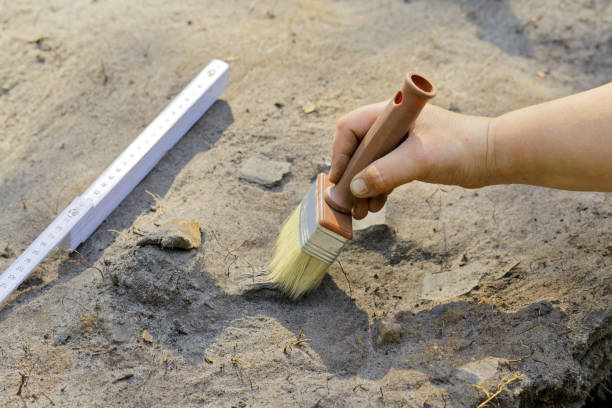
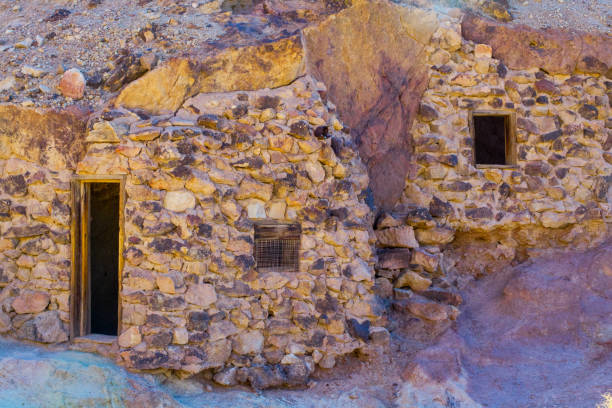
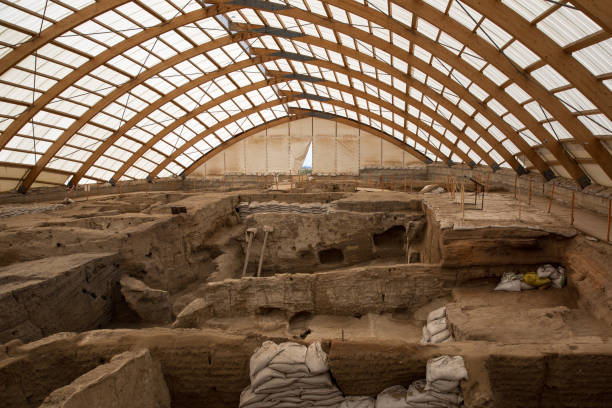
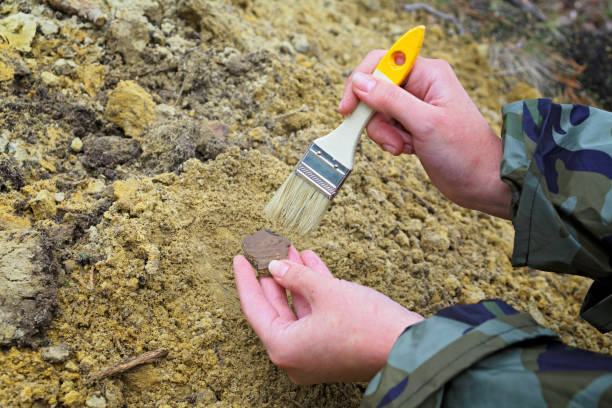
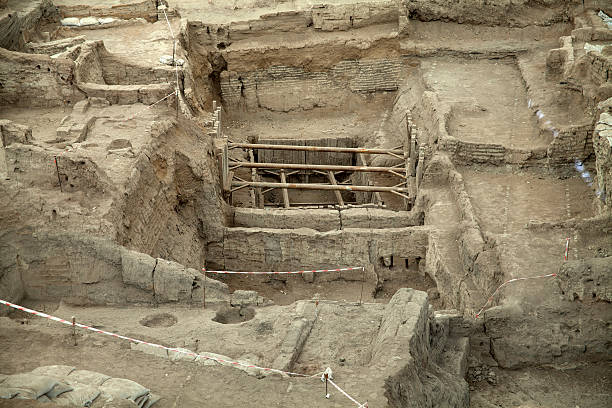
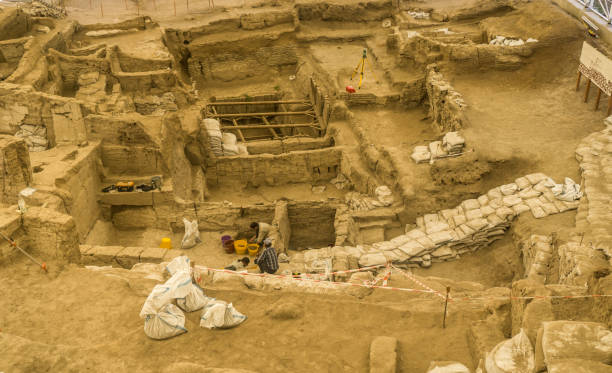
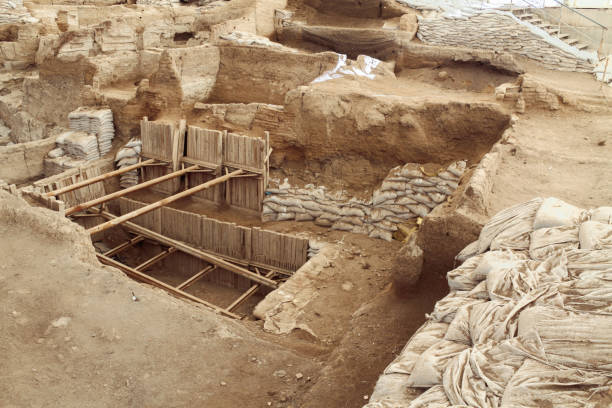
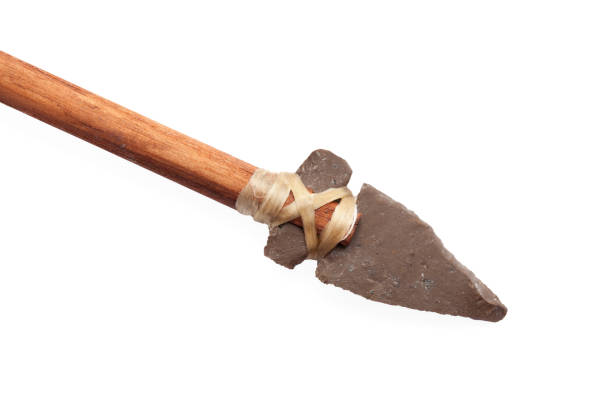
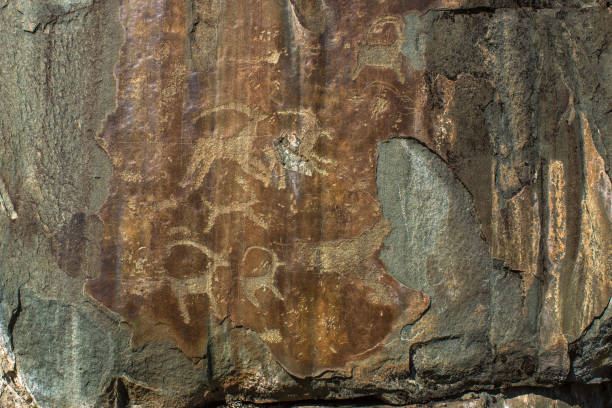
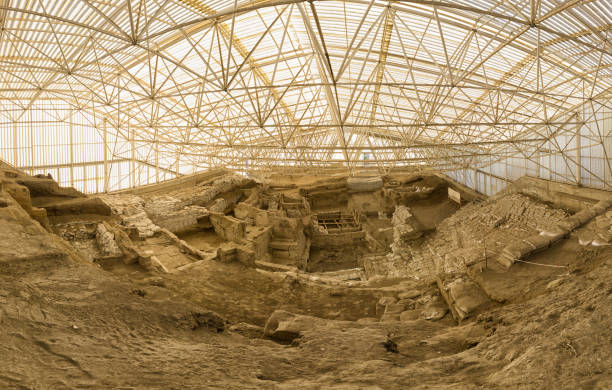
![Catalhoyuk in Konya Çatalhöyük was a very large Neolithic and Chalcolithic proto-city settlement in southern Anatolia, which existed from approximately 7500 BC to 5700 BC, and flourished around 7000 BC.[1] In July 2012, it was inscribed as a UNESCO World Heritage Site. çatalhöyük stock pictures, royalty-free photos & images](https://media.istockphoto.com/id/1317407114/photo/catalhoyuk-in-konya.jpg?s=612x612&w=0&k=20&c=dt9RlJWdJwXNl0fF2KPboBH8ZvZekhuLk0Xk0J3T5qc=)
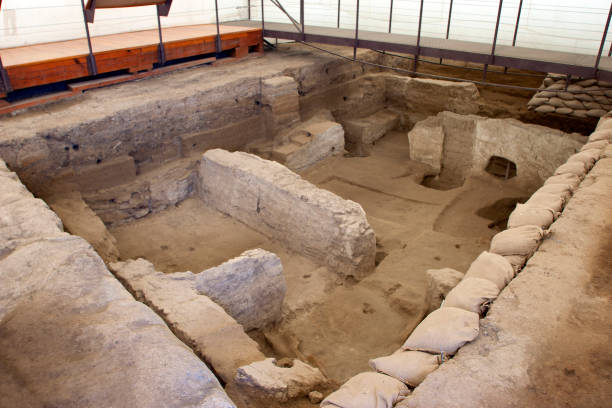
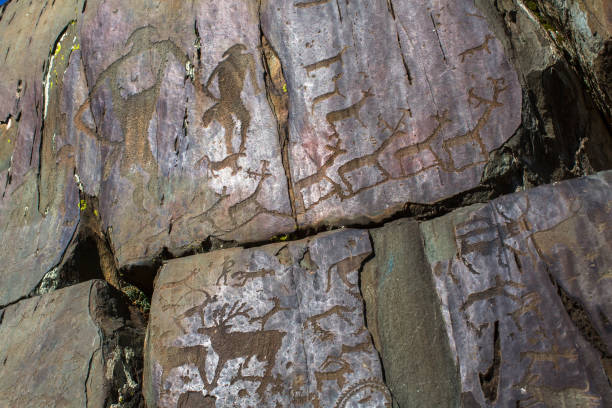

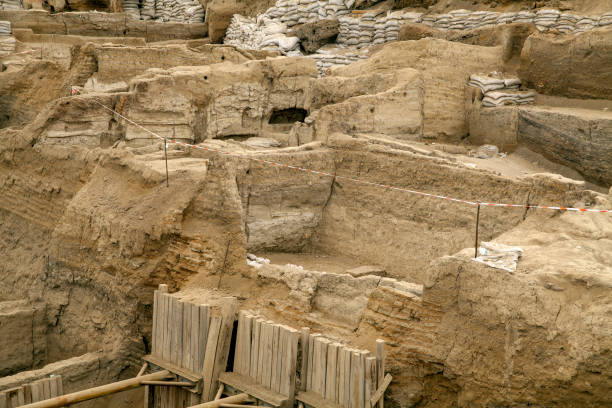

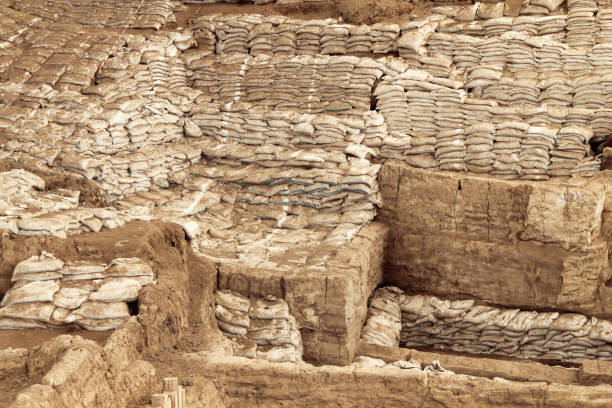
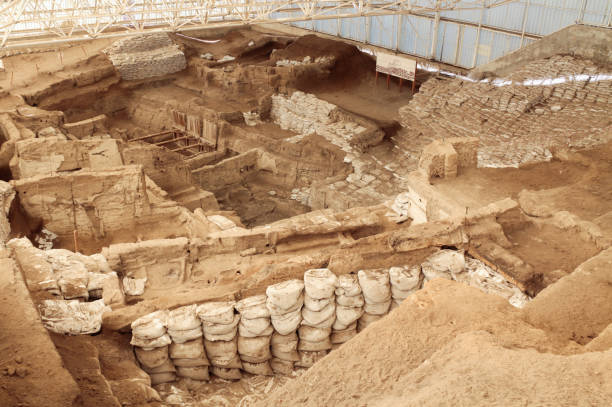
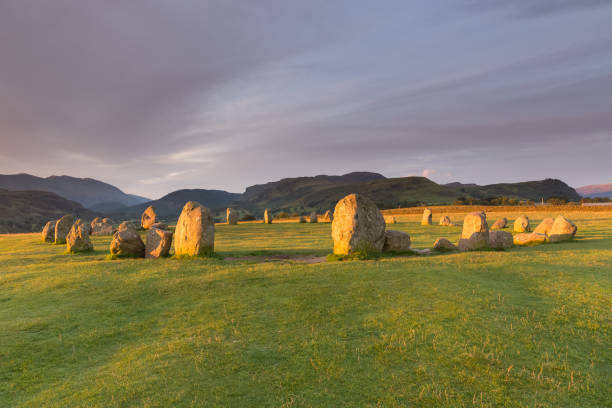
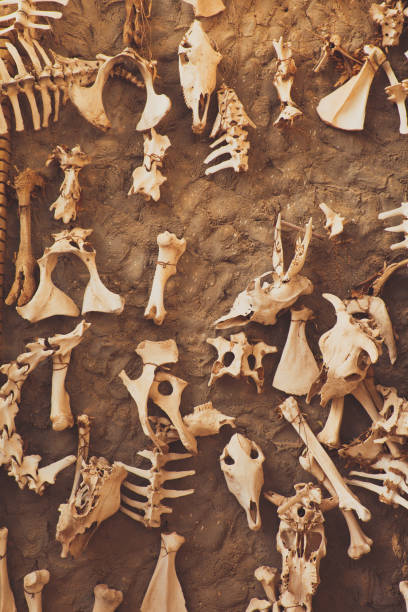
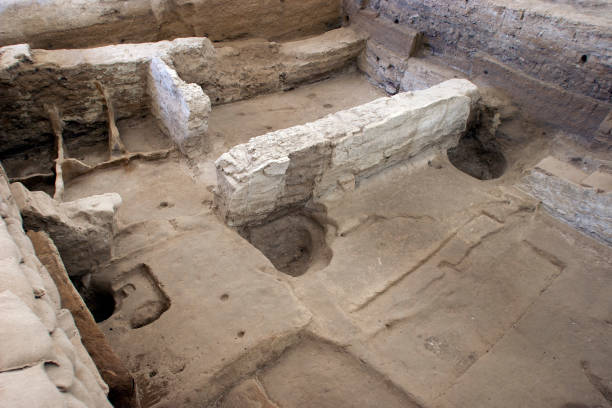
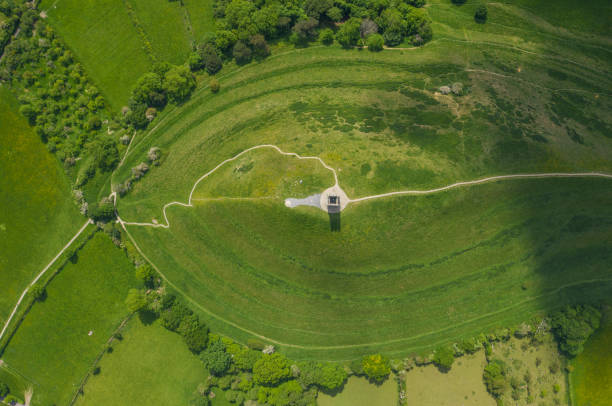
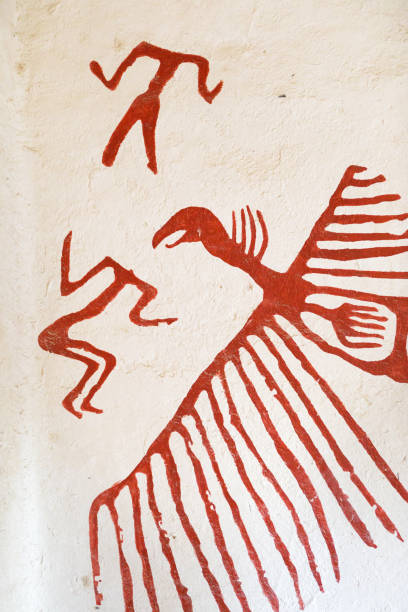
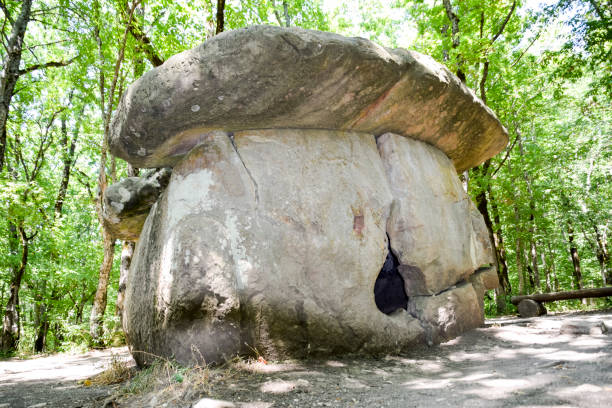
![Catalhoyuk in Konya Çatalhöyük was a very large Neolithic and Chalcolithic proto-city settlement in southern Anatolia, which existed from approximately 7500 BC to 5700 BC, and flourished around 7000 BC.[1] In July 2012, it was inscribed as a UNESCO World Heritage Site. çatalhöyük stock pictures, royalty-free photos & images](https://media.istockphoto.com/id/1317760446/photo/catalhoyuk-in-konya.jpg?s=612x612&w=0&k=20&c=fruez_XVx68j6Mpq0IVZgOqv-I4I_opdUb_gVlAf95U=)
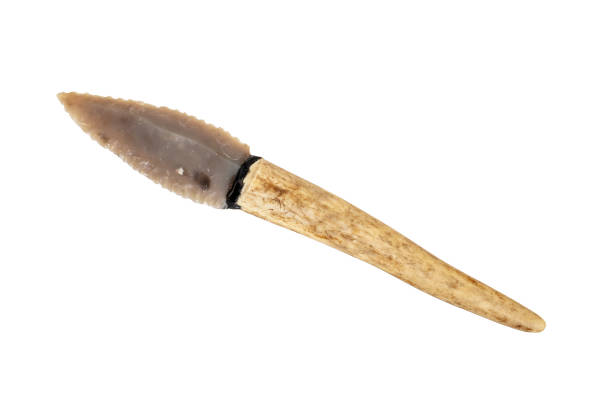
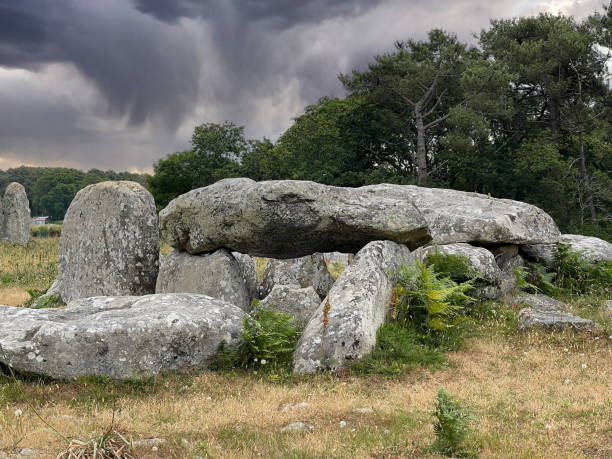

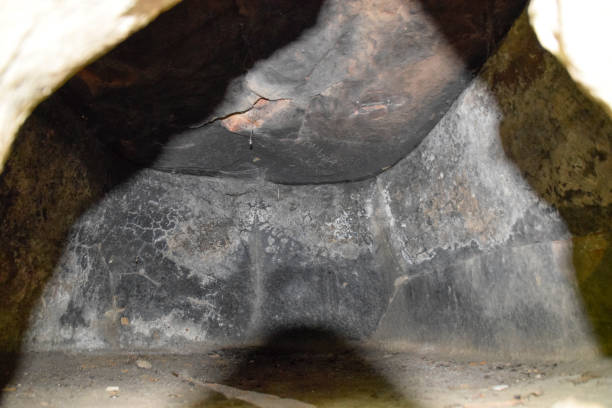
![Catalhoyuk in Konya Çatalhöyük was a very large Neolithic and Chalcolithic proto-city settlement in southern Anatolia, which existed from approximately 7500 BC to 5700 BC, and flourished around 7000 BC.[1] In July 2012, it was inscribed as a UNESCO World Heritage Site. çatalhöyük stock pictures, royalty-free photos & images](https://media.istockphoto.com/id/1317760507/photo/catalhoyuk-in-konya.jpg?s=612x612&w=0&k=20&c=eoe7qtDiBrauUcwMXpXmaFAAX7I8IUfGIrgEefzwOJQ=)
